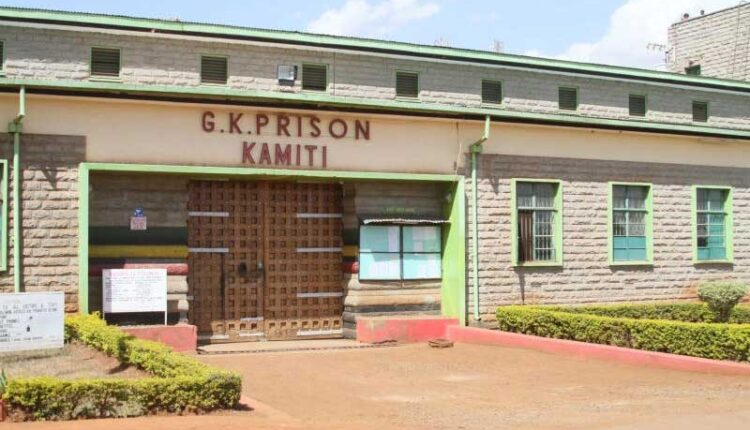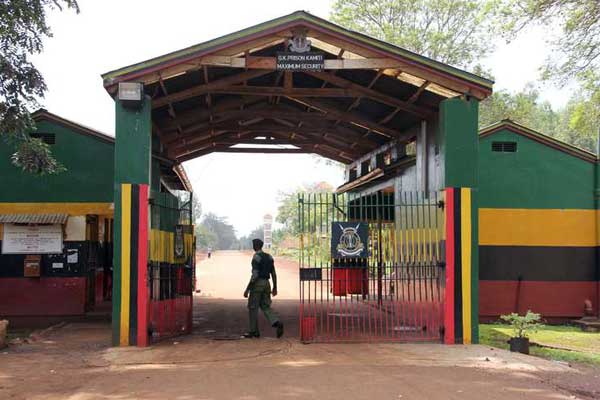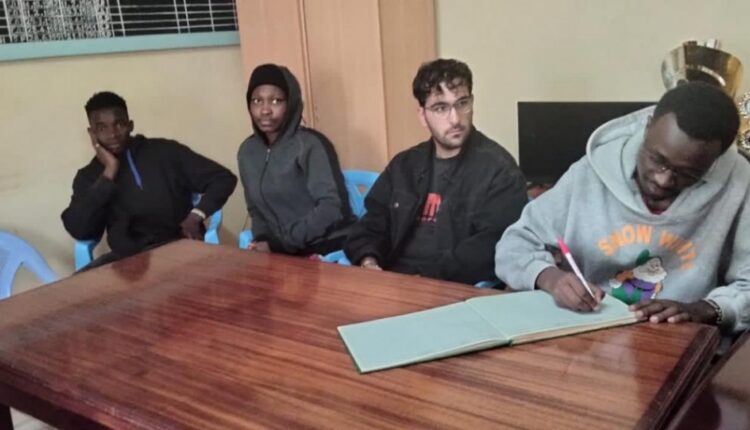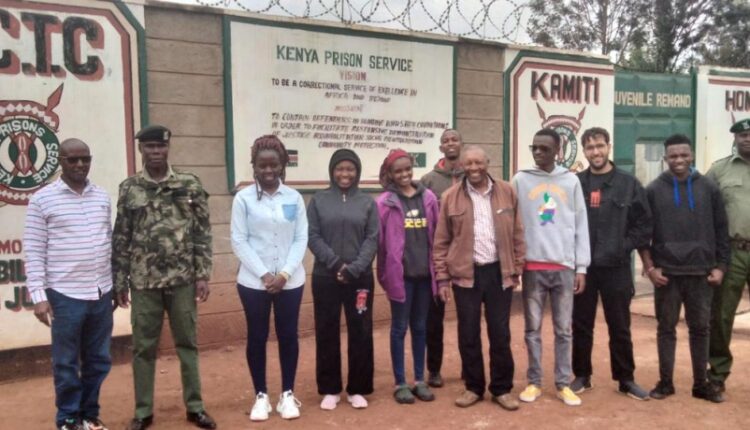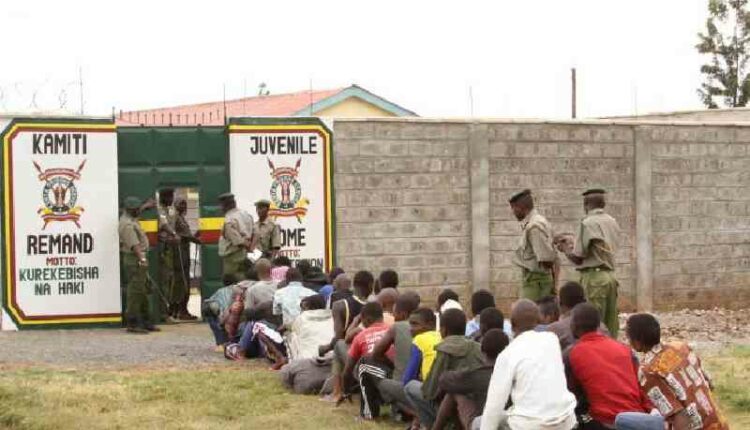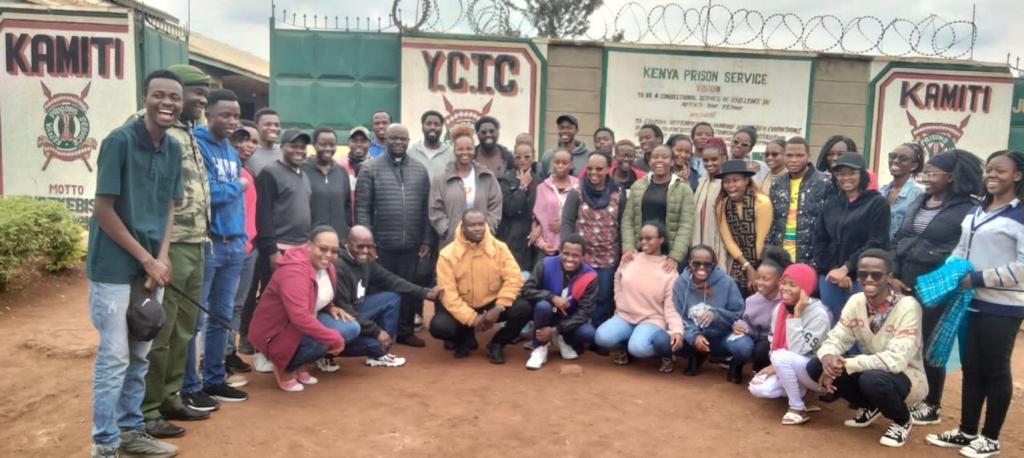
Kenya: Healing the hearts of young prisoners
An amazing story of young people in Kenya
My name is Stephen from Kenya I would like to share this amazing story that happened not too long ago. It was on Saturday Morning when my friends from the Focolare Movement and I decided to visit the youth accommodated at the Kamiti Youth Correctional Center, the biggest juvenile detention center in Kenya, that welcomes minors coming from all over the country. We were about 40 youths from different parts of the country. What we found there once we arrived there left us heartbroken with a strong sense of urgency and injustice. At that moment, the structure accommodated 163 youth, ranging in age from 13 to 21 years, some awaiting trial and others serving sentences.
They lived in conditions that were, to say the least, harrowing and poor, just imagine seven people sharing a mattress, without the necessary blankets, to ensure a minimum of comfort. When the mattresses ran out, for some there was no choice but to sleep on the floor, cold and pitiless. Seeing with our own eyes their daily struggle for human dignity, we also realised that the detainees do not have a television set, which means they have no access to information or the slightest means of entertainment.
Realising all this opened our eyes to a world we had never seen before. These were not just young people, but young souls longing for hope, dignity and a chance at redemption. When we walked through those doors, we entered a world full of difficulties, where young hearts struggle for a chance to regain their place in society.
Driven by empathy and the desire to make a difference, we started to study a plan of action to alleviate the sufferings of these young people in prison because we believe that a little bit of kindness can do a lot. By this, we reunited and wrote a heartfelt letter to communities around us and to some of the organizations that we know can be able to help us. We asked for donations of mattresses, blankets, magazines, novels and clothes. But did not stop there: We shared our plan with everyone we knew through social media platforms by putting up posters, sending messages, etc. You know what? People are desirous of helping! It was like a wave of kindness that overwhelmed us, and it was an incredible sensation. Apart from the blankets, mattress, and clothes, we also received a television and a decoder!
Then came the big day, the day of delivery. Some young people and I returned to the young people of Kamiti with fluttering hearts. We wanted to bring comfort and happiness to these young people to remind them that they are not alone and that people care about them. When they saw us with all those gifts, their faces lit up like the sun. That moment was one of pure joy! We shared stories, we laughed and for a while, we forgot about the challenges we were facing. It was not just about the gifts, but also about the bond we created. We showed them that we cared and that they had not been forgotten.
And do you know what we experienced? This journey brought us all closer together. It showed us the power of coming together for a cause: we can make a difference as a team through works of mercy. Looking back, it is a reminder that kindness is not complicated. It is about doing what you can, about reaching out and showing someone that they matter. We do not need big gestures; we just need to care. And together, we can brighten up someone’s day, just like we did for those boys.
I am also a student of Criminology and when I interacted with young people in prisons, I thought that we, as a society, are not doing our part to help these young people. When they are in these prisons, their lives are somehow stopped, as most of them are not yet 18 years old.
I am convinced that our culture offers many ways to resolve juvenile cases without resorting to formal court proceedings, for instance through the collaborative involvement of local chiefs, community leaders and elders. By harnessing the wisdom and authority of these respected figures, a restorative justice approach can be implemented. The community can come together to create an environment in which the juvenile offender is held accountable for his or her actions, but also helped to find the root causes of his or her behaviour. Leaders and elders can emphasise the importance of rehabilitation, offering support and mentoring to the young person. This approach, which takes into account cultural resources, not only fosters the young person’s sense of responsibility, but also strengthens community ties. Through open dialogue and shared decision-making, this alternative resolution pathway enables communities to address youth crime by promoting heart healing and preventing further involvement in criminal acts.
Stephen

